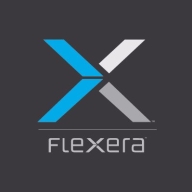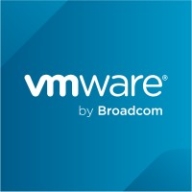

Flexera Cloud Management Platform and VMware Tanzu Platform compete in cloud operations optimization. VMware Tanzu has an advantage with its robust feature set, although Flexera CMP is noted for its favorable pricing and support.
Features: Flexera CMP provides robust multi-cloud management with strong policy controls and extensive automation features, making it effective for optimizing resources. VMware Tanzu integrates deeply with Kubernetes, supporting advanced cloud-native application development and efficient scaling. Tanzu's strong CI/CD pipeline capabilities notably enhance its offerings.
Room for Improvement: Flexera CMP could improve by expanding its integration with other cloud services and simplifying complex automation processes. Additional analytics tools could enhance its platform. VMware Tanzu may benefit from streamlining its deployment processes and reducing the expertise required for implementation. Its pricing model could be adjusted for better competitiveness.
Ease of Deployment and Customer Service: Flexera CMP offers a simple and straightforward setup, suitable for both small and large environments, supported by dedicated customer service. VMware Tanzu's deployment leverages microservices and may require specialized expertise, yet provides strong support for cloud-native applications.
Pricing and ROI: Flexera CMP presents a competitive pricing model with transparent costs, offering a positive ROI through efficient resource management and cost savings. On the other hand, VMware Tanzu requires a higher initial investment, justified by its enhanced feature set and significant long-term ROI potential.
| Product | Market Share (%) |
|---|---|
| VMware Tanzu Platform | 1.1% |
| Flexera Cloud Management Platform (CMP) | 2.1% |
| Other | 96.8% |

| Company Size | Count |
|---|---|
| Small Business | 10 |
| Midsize Enterprise | 3 |
| Large Enterprise | 10 |
Flexera Cloud Management Platform (CMP) offers comprehensive capabilities for managing cloud environments, enabling businesses to control costs, optimize resources, and ensure compliance across multiple cloud providers.
Flexera CMP is designed to streamline cloud management by providing a unified platform that supports automation, reporting, and policy enforcement. It empowers IT departments to efficiently manage multi-cloud environments by offering tools for workload optimization, visibility into cloud usage patterns, and governance features. Flexera CMP's integrations and customizable workflows enable seamless deployment and management of applications, reducing the complexity often associated with cloud operations.
What are the key features of Flexera CMP?Flexera CMP is particularly valuable for industries with complex IT environments such as finance, healthcare, and technology, where effective cloud management is critical to maintaining continuous operations. By leveraging Flexera CMP, these industries can optimize their cloud strategies, balance workloads efficiently, and ensure data security and compliance, thereby driving business transformation.
VMware Tanzu Platform is designed for cloud-native development and management of Kubernetes, CI/CD processes, microservices, and containerized workloads. It supports deployments both on cloud and on-premises, providing centralized management via Mission Control.
VMware Tanzu Platform offers seamless integration with vSphere, ESX, and vSAN, supporting centralized cluster management and lifecycle management. The platform provides a GUI for monitoring CI/CD pipelines and network policies, enhancing multi-tenancy and Day 2 operations. Users can easily manage Kubernetes clusters, monitor applications, and integrate with tools such as GitHub, GitLab, Cloud Foundry, and Azure. It ensures compliance and security for service providers, financial institutions, and businesses.
What are the key features of VMware Tanzu Platform?
What benefits and ROI should users look for in VMware Tanzu Platform reviews?
Industries such as financial institutions, service providers, and businesses requiring rigorous compliance and security deploy VMware Tanzu Platform. These entities benefit from centralized management, streamlined DevOps processes, and integrated tools, enhancing their capabilities in cloud-native developments and containerized workloads.
We monitor all Cloud Management reviews to prevent fraudulent reviews and keep review quality high. We do not post reviews by company employees or direct competitors. We validate each review for authenticity via cross-reference with LinkedIn, and personal follow-up with the reviewer when necessary.